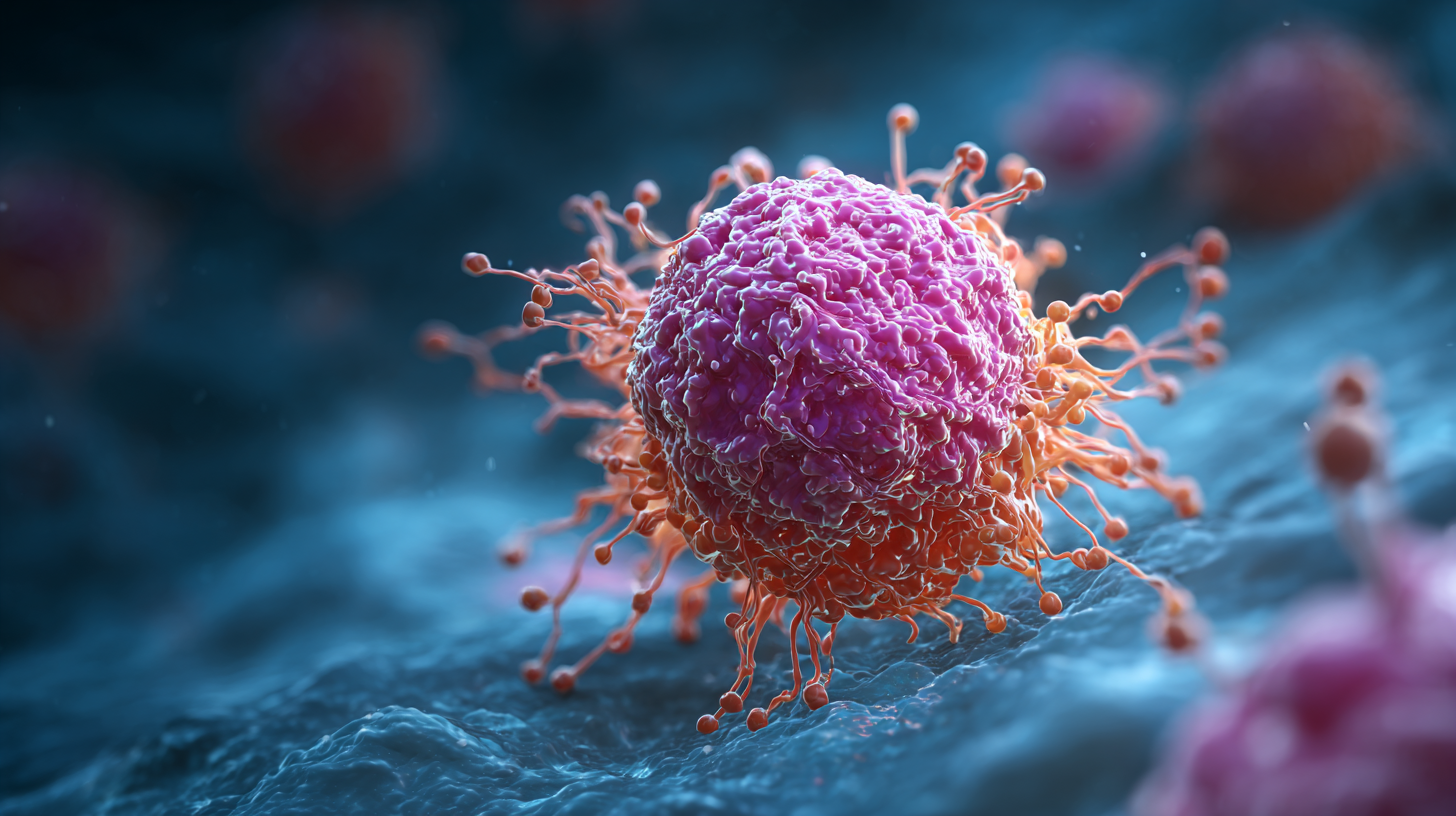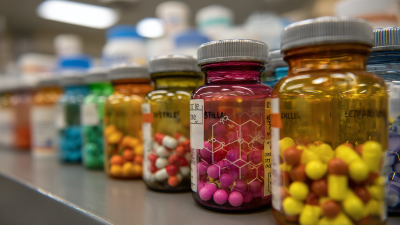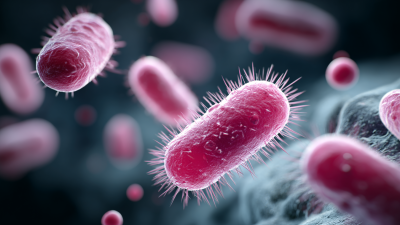Leave Your Message
In recent years, the quest for effective cancer treatments has led researchers to explore various compounds with potential therapeutic benefits. Among these, the anticancerogen Nitroxoline has emerged as a promising candidate, thanks to its multifaceted mechanisms of action and established safety profile. According to a report from the Global Cancer Observatory, cancer accounted for nearly 10 million deaths worldwide in 2020, highlighting an urgent need for innovative therapies. Nitroxoline, traditionally used as an antibiotic, has shown significant anticancer activities in preclinical studies, inhibiting tumor growth and enhancing apoptosis in various cancer cell lines. Its ability to create a hostile environment for cancer cells by disrupting metabolic pathways offers a new avenue for treatment, particularly in drug-resistant cases.

As we delve deeper into how we can unlock the potential of anticancerogen Nitroxoline, we uncover a new hope in the continuous battle against cancer, paving the way for more effective and targeted therapies that could change the landscape of cancer treatment.
Nitroxoline, recognized for its potential as an anticancer agent, has garnered attention for its dual mechanism of action. Recent integrative proteomic and functional analyses reveal promising insights into nitroxoline's effects on pancreatic cancer cells, particularly AsPC-1. The research indicates a dose-dependent antiproliferative activity, suggesting that nitroxoline could play a critical role in developing new therapeutic strategies for challenging malignancies like pancreatic cancer. This newfound potential in oncology highlights the versatility of nitroxoline, traditionally regarded for its use in urinary tract infections.
The importance of repurposing existing drugs cannot be overstated, especially in an industry that continually seeks innovative treatments to combat various cancers effectively. According to industry reports, the market for cancer therapeutics is expected to reach over $200 billion by 2026, driven by advances in drug production and discovery. Nitroxoline's ability to disrupt cancer cell proliferation through multiple pathways positions it as a valuable candidate amidst this growing market, indicating that further research and clinical trials may solidify its role in cancer treatment protocols moving forward. The exploration of such dual-action agents is crucial in the ongoing fight against cancer, providing new avenues for therapeutic development.

Recent statistics on cancer highlight the urgent need for innovative treatments in the face of rising incidence rates and persistent mortality. The advancements in targeted therapies, such as the notable clinical trial findings related to a new injectable treatment for PSMA-positive metastatic hormone-sensitive prostate cancer (mHSPC), underscore the potential of novel approaches. The trial's interim analysis demonstrated that combining this innovative treatment with standard therapy significantly extended progression-free survival compared to standard therapy alone, presenting a promising future for patients battling prostate cancer.
This development also aligns with the broader trend in oncology that emphasizes personalized medicine and targeted therapies. As new therapeutic options become available, it is critical to address the pressing challenges posed by cancer statistics, which demonstrate an increasing demand for effective treatments. The promising results of such treatments not only provide hope for better patient outcomes but also illustrate the importance of continuous research and investment in cancer therapy innovations.

Recent clinical trials are shedding light on the potential efficacy of Nitroxoline, a compound traditionally used as an antibiotic, in treating various types of cancer. Researchers are now investigating its ability to inhibit cancer cell proliferation and induce apoptosis, presenting a promising alternative approach in oncology. The trials are focused on assessing Nitroxoline's impact across different cancer types, including bladder, breast, and prostate cancers, with preliminary results indicating a favorable response in patients who have limited treatment options.
Tips for Considering Nitroxoline in Cancer Treatment:
Nitroxoline, a well-known antibacterial agent, is emerging as a potential player in the realm of cancer treatment. Traditionally used for urinary tract infections, it has shown promise in recent studies as an anticancerogen. Its unique ability to inhibit the growth of cancer cells while enhancing the efficacy of conventional therapies positions it as a valuable adjunct in oncology. Researchers are exploring how Nitroxoline can synergistically work alongside standard treatments such as chemotherapy and radiotherapy, aiming to improve patient outcomes and reduce side effects.
Combining Nitroxoline with conventional cancer therapies could change the landscape of cancer treatment. By targeting cancer cell metabolism and promoting apoptosis, Nitroxoline may enhance the sensitivity of tumors to existing treatments. This combination strategy leverages the strengths of both conventional therapies and novel agents like Nitroxoline, potentially leading to improved therapeutic responses. Ongoing clinical trials and investigations are crucial to understanding the full spectrum of benefits that Nitroxoline brings when used in conjunction with established cancer treatment protocols. The hope is that such collaborations will unlock new avenues for making cancer therapy more effective and accessible.
This bar chart illustrates the effectiveness of Nitroxoline in conjunction with conventional cancer therapies across various cancer types, measured by response rate.
Nitroxoline, originally developed as an antimicrobial agent, has recently garnered attention for its potential as an anticancerogen. Its safety profile is a critical consideration in its application to oncology practice. According to a study published in the "Journal of Cancer Research", the tolerability of nitroxoline has been established in various clinical trials, demonstrating that the drug exhibits a low incidence of adverse effects when administered within the recommended dosages. Patients report minimal gastrointestinal discomfort, headaches, and dizziness, making nitroxoline a viable candidate for integration into cancer treatment regimens.
In terms of dosage, clinical guidelines suggest an initial administration of 400 mg daily, divided into two doses, gradually increasing based on patient tolerance and response. Recent data from a comprehensive review in "Clinical Oncology" indicates that such a dosing strategy not only enhances drug efficacy but also significantly minimizes potential toxicity. With its promising profile, nitroxoline might play an essential role as part of combination therapy, aiding in reducing tumor growth and improving patient outcomes. Thus, ongoing research will be vital in fully elucidating the therapeutic benefits and optimization of nitroxoline in cancer care.
| Parameter | Details |
|---|---|
| Mechanism of Action | Nitroxoline exhibits anticancer properties through inhibition of metalloproteinases and prevention of tumor metastasis. |
| Indications | Used in treatment protocols for various solid tumors, including bladder, prostate, and kidney cancers. |
| Dosage | Recommended dosage is 500 mg orally three times daily, adjusted based on individual tolerance. |
| Safety Profile | Generally well tolerated; common side effects include gastrointestinal discomfort and headache. |
| Contraindications | Contraindicated in patients with renal impairment and hypersensitivity to nitroxoline. |
| Clinical Trials | Ongoing studies are evaluating the efficacy of nitroxoline in conjunction with existing chemotherapy agents. |






